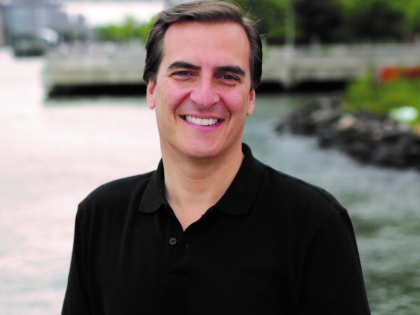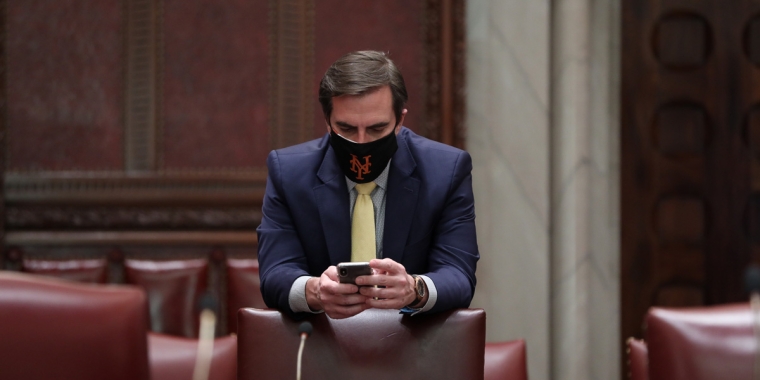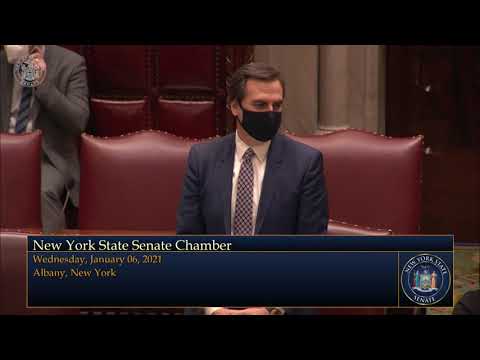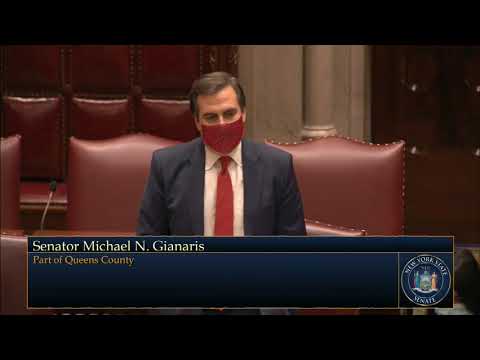
CNN: 'It's embarrassing': Why New York is still waiting for full election results

New York was called early on election night for President-elect Joe Biden, but if the Empire State had been a presidential battleground, the drama that gripped the country for a few days might now be stretching into its third week.
There is no state slower at counting its ballots and, despite Democratic control of the state government, New York remains home to some of the country's most byzantine voting laws and procedures. Its painfully slow and, in some localities, oddly staggered approach to counting votes means the results of a number of US House and key state Senate and Assembly races remain unknown.
"It's embarrassing," said state Sen. Michael Gianaris, the Democratic deputy majority leader. "And if we were a swing state in this presidential election, this would be a national scandal."
A few hours earlier, on Tuesday, New York Rep. Tom Suozzi, a Democrat, declared victory in his reelection race -- two weeks after Election Day, as the early appearance of a deficit disappeared with the count of mail-in ballots. (CNN has not yet called the race.) The fate of fellow incumbent Democrat Anthony Brindisi, in upstate New York, remains uncertain. He is neck-and-neck with Claudia Tenney, the Republican he unseated two years ago.
New York isn't the only heavily Democratic state to deliver its results days or even weeks after Election Day.
California made headlines in 2018 as the deliberate counting of votes -- millions arriving within the legal three-day grace period after the election -- turned what was already being called a nationwide blue wave into a tsunami. But California law is more cleanly administered and officials have touted the process -- which uses a signature verification system that only invalidates votes after higher ranking officials sign off, and then allows voters to "cure," or fix, their ballots -- as a means of making sure as many people as possible have their votes counted.
A pandemic worsens old problems
In New York, there is less patience -- and more confusion. That some races centered in New York City remain undecided is not much of a surprise. The city's Board of Elections is notoriously cumbersome and disorganized. And the state's decision to allow for early and expanded absentee voting put added pressure on an already strained apparatus.
"This year's delays are another example of the BOE's incompetence," said New York City Comptroller Scott Stringer. "What was an antiquated absentee ballot process morphed into broad mail-in voting. With more than one million New Yorkers voting by absentee ballot, the review after the return process created an enormous logjam."
Stringer also condemned what he described as a lack of urgency in the efforts to address decades of decay.
"We have a President who won't even acknowledge that he overwhelmingly lost the election using mail-in ballots as a prop and an excuse," he said. "And here, we're sort of accepting that we can't have competent elections. That's not what our democracy is about."
By CNN's count, the state -- as of Wednesday afternoon -- had only reported 78% of its estimated vote total.
New York elections officials can't say they didn't see the delays coming. Some of the state's June 23 primaries dragged on as absentee ballot counts came in slowly and were subject to seemingly interminable disputes and court challenges. Rep. Carolyn Maloney's victory over progressive challenger Suraj Patel in New York City's 12th Congressional District wasn't certified -- amid court clashes over invalidated ballots -- until August 4, six weeks after the election.
"What we saw in June and the primary was it took weeks before we really knew what the primary results were," said Sochie Nnaemeka, the Working Families Party's state director. "The general is even more important. It affects the balance of power in our state. We still are not clear whether we have a supermajority of Democrats."
Those questions, Nnaemeka added, are the product of chronic underinvestment in infrastructure that undermines voter confidence over times and, in the near-term, creates difficulties for lawmakers -- some of whom still don't know their fate -- as the new legislative session nears amid a worsening coronavirus pandemic.
In an effort to improve the voting process, New York's legislature instituted a process for curing absentee ballots that went into effect this summer, following the primaries. The state has also begun the transition into electronic poll books, which streamline the process of tracking and updating voter data, though the technology is not yet used statewide.
"If the presidential race were swinging on New York, things would look a lot different right now," said Sean Morales-Doyle, deputy director at the Brennan Center's Democracy Program.
"In many states, election officials can start counting absentee ballots before election day," Morales-Doyle said. "That's why we knew what happened in Florida basically right away. In New York, absentee ballots cannot be counted before polls close."
The reason for that, election experts say, is because New York law prioritizes in-person ballots.
Stuck between two systems
"We're a very old-school state when it comes to voting -- a lot of our election law is very antiquated and very old," Jennifer Wilson, deputy director for the League of Women Voters of New York State, told CNN. "New York State prefers you to vote in person. They would prefer you not to vote absentee."
Rules regarding absentee ballots differ from state to state. For example, if the recipient of a mail-in ballot in neighboring New Jersey were to go to the polls in person, the vote cast there would be considered a provisional ballot, only counted if the requested mail-in ballot never materialized.
In the Empire State, however, the in-person ballot is king.
"You could mail your (absentee) ballot in in New York and then go vote in person, and they'd throw the absentee ballot out," Morales-Doyle said.
As a result of this preference, New York law forbids the counting of absentee ballots until after polls close on Election Day, regardless of when they were sent in.
Even then, however, the timeline gets complicated.
"We let local counties dictate a lot of the interpretation of state election law," Wilson said. "The state law on when they can open and start counting absentee ballots is real wishy-washy."
According to state law, the counting must begin within 14 days of Election Day. The law also requires notification five days in advance of counting to ensure the attendance of election observers.
It's this law that's left up to interpretation by county officials, Wilson said. And, in some cases, that leads to a week's delay before the envelopes are opened. By the time they are, partial results are already in -- meaning the bipartisan county election commissioners, one Democrat and one Republican, know which candidate is ahead and can choose to object to ballots in an effort to help preserve their side's lead.
State Senate Democrats, led by Gianaris, have put forth a bill that would speed up the process and potentially cut out the gamesmanship. It would mandate that the election boards start processing absentee ballots upon their arrival and allow the count to begin three hours before the polls close on Election Day.
But as it stands, even those dialed into the process disagree on the letter of the law. Morales-Doyle argued that counties don't have to wait until Election Day to notify observers.
"I'm not aware of any legal provision in New York that says you have to wait a week," he said, though that is the common practice. "There's nothing stopping them from beginning the count as soon as polls close."
John Conklin, the director of public information for the New York State Board of Elections, agreed that a count could start sooner, but told CNN there are some good reasons they typically don't.
The state has a 7-day statutory deadline within which it can continue to receive absentee ballots mailed by Election Day.
"To wait until that date is not unusual," Conklin said.
Additionally, Conklin said, in 2019 the state Legislature passed a law enabling voters whose names are not in a polling place's ballot book -- if, for example, a voter had moved from elsewhere in the state and not registered under their new address -- to file an "affidavit ballot." While making it easier for New Yorkers to vote, the law means that affidavit ballots must be checked against all other in-person or absentee ballots to ensure no voter casts more than one vote -- a process that cannot begin until polls close.
Under an executive order to expedite that process this year, Conklin said that the county boards had gotten their affidavit ballots to the state within 48 hours after Election Day, and that his office had completed its check for double votes by the following morning -- Friday, November 6.
That, Conklin said, would have been the earliest date at which the count could have begun.
Valerie Vazquez-Diaz, of the New York City Board of Elections, told CNN, "The process is ongoing," citing the schedule on the board's website.
Asked if city board would release status updates, or percentage totals of overall absentees counted or precincts reported, she declined.
"No, we do not release piecemeal," Vazquez-Diaz said. "We go from unofficial election night results to certified results after we certify the entire election."
Experts agree that coming to an accurate count of all votes is and should be the foremost objective.
But with the state's certification deadline of December 7 on the horizon, a slow count puts added pressure on candidates who might seek to pursue legitimate court challenges.



